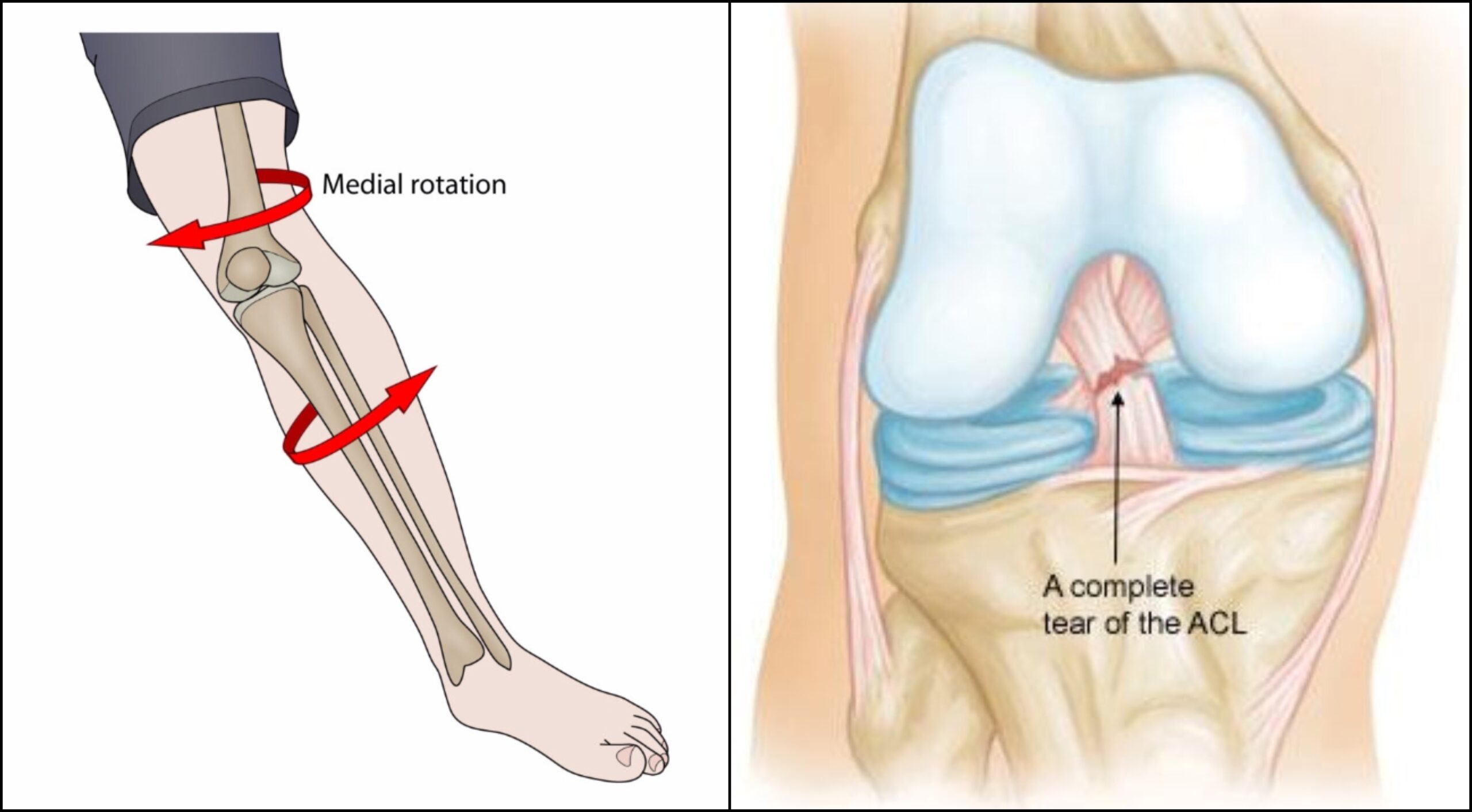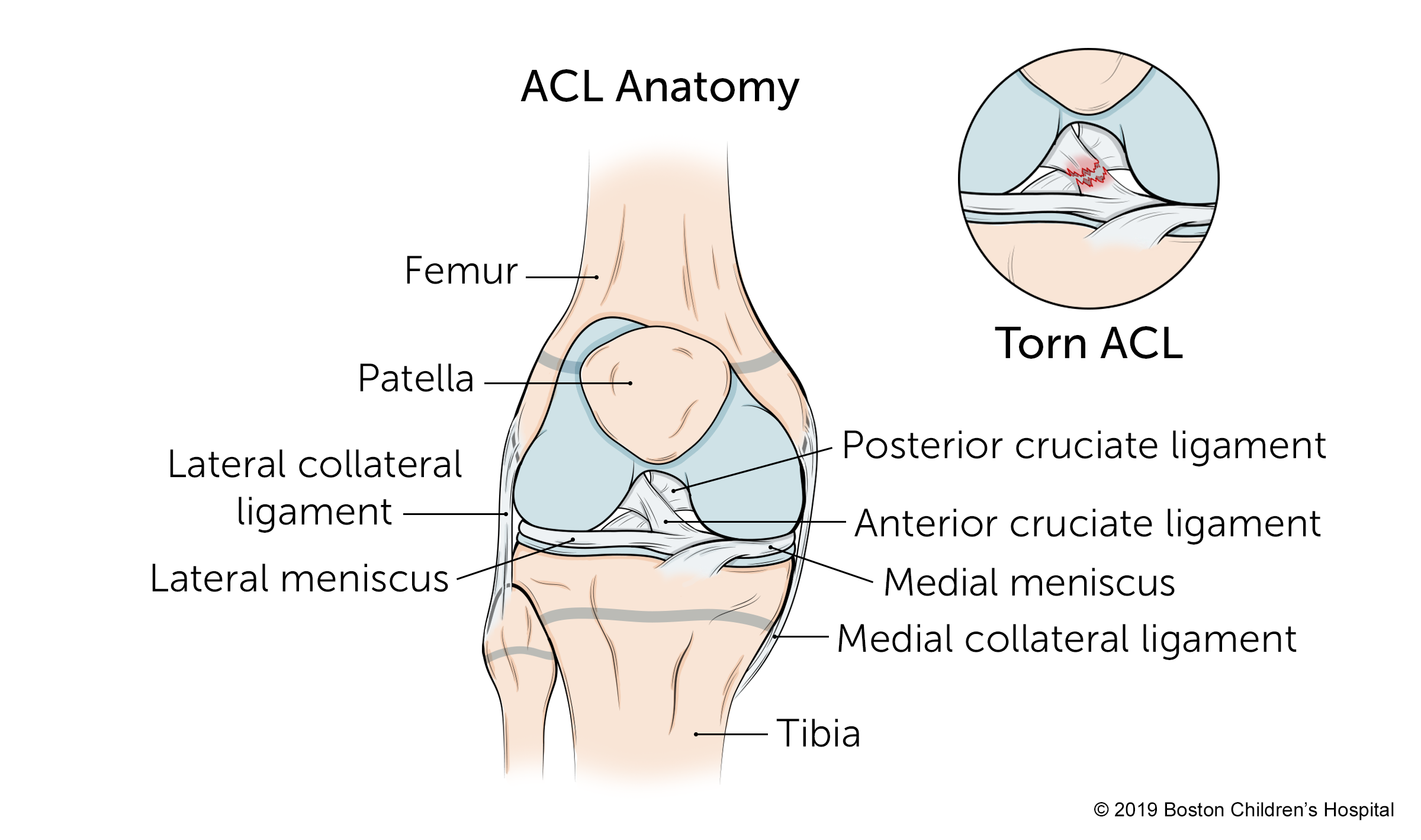Anterior Cruciate Ligament Injury
Do you know what the anterior cruciate ligament is? If not, you’re not alone. ACL injuries are relatively common, yet many people don’t know much about them. In this comprehensive guide, we will discuss everything you need to know about ACL injuries. What is the ACL, what are the symptoms, and how can they be treated? Keep reading to find out!

What is an Anterior Cruciate Ligament injury?
The anterior cruciate ligament (ACL) is one of the main stabilizing ligaments in the knee. It connects the femur (thigh bone) to the tibia (shin bone) and helps keep the knee stable.
An ACL injury is a tear or rupture of the anterior cruciate ligament. ACL injuries most commonly occur during sports that involve sudden stops or changes in direction, such as basketball, soccer, football, and tennis.
Most ACL tears are caused due to :
-A direct blow to the knee
-Sudden stop or change in direction
-Landing awkwardly from a jump
Most ACL injuries occur when the knee is bent and twisting at the same time. This can happen when you land from a jump incorrectly, or when you make a sudden stop and change directions quickly, such as when playing soccer or basketball. A torn ACL can also occur in car accidents or falls.
Treatment typically involves rest, ice, and over-the-counter pain medication. Laparoscopic surgery is sometimes necessary to repair the damaged tissue in a traditional hernia.
Symptoms of an ACL injury

The symptoms of an ACL injury can vary depending on the severity of the injury. However, some common symptoms include:
-A popping sound at the time of the injury
-Severe pain and swelling in the knee
-Inability to put weight on the leg
-Instability or “giving way” of the knee
If you think you have injured your ACL, it is important to see a doctor right away.
Diagnosis of Anterior Cruciate Ligament injury
There are many ways to diagnose an ACL injury.
MRI:
The most common way to diagnose anterior cruciate ligament injuries is through an MRI. This will give your doctor a clear look at the structure of your knee and whether or not the ACL is torn. Sometimes, the patient is suffering from posterior cruciate ligament (PCL), lateral collateral ligament or medial collateral ligament (MCL)injuries.
X-ray:
An x-ray may also be ordered to rule out other potential causes of knee pain, such as a fracture.
Physical examination:
Your doctor will likely perform a physical examination of your knee. This will help to determine if there is any instability or looseness in the knee joint. Additionally, your doctor will check for signs of swelling and tenderness.
Ultrasound:
An ultrasound may also be used to diagnose an ACL injury. This imaging test uses sound waves to create images of the inside of your knee. An ultrasound can help to determine if the ACL is torn or not.
Treatment of Anterior Cruciate Ligament injury
There are a number of different options available for the treatment of ACL tears. The type of treatment that is best for you will depend on a number of factors, including the severity of the ACL tear, your age and activity level, and your overall health.
Non-surgical treatment:
If you have only a mild injury, or if you are older or less active, you may be able to treat your injury without surgery. Non-surgical treatment options include:
Physical therapy:
Physical therapy can help to strengthen the muscles around your knee and improve your range of motion. Knee pain relievers can reduce the pain from knee injuries.
Bracing:
Wearing a knee brace can help to stabilize your knee and protect it from further injury.
Activity modification:
Avoiding high-impact activities, such as running or jumping, and participating in low-impact activities, such as swimming or biking, can help to protect your knee (specifically ACL injuries) while it heals.
Surgical treatment:
If you have a serious knee injury, or if you are young and active, you may need to have surgery for anterior cruciate ligament reconstruction. Surgical options include:
Reconstructive surgery:
This type of surgery involves using a tissue graft to replace the damaged ACL. The graft may be taken from another part of your body, or it may be artificial.
Arthroscopic surgery:
This type of surgery is less invasive than traditional open surgery and involves making small incisions in the knee to repair the ACL.

Tips to prevent Anterior Cruciate Ligament injury
Following are some tips to prevent anterior cruciate ligament injury:
- Avoid sudden and excessive twisting or turning movements of the knee.
- Warm up properly before participating in sports or other activities that may put stress on the knee.
- Strengthen the muscles around the knee, especially the quadriceps and hamstrings, to help support the joint.
- Use proper footwear that provides good support and cushioning for the feet and ankles.
- Be aware of your surroundings when participating in activities, and avoid obstacles or uneven surfaces that could cause a twisted ankle or knee.
If you do suffer an ACL injury, it is important to seek medical attention as soon as possible to begin rehabilitation and prevent further damage to the joint.
Exercises to strengthen anterior cruciate ligament (ACL)
Following are some exercises which will help to strengthen your cruciate ligaments. These exercises can help improve your range of motion and flexibility, as well as your strength.
1. Leg curls:
This exercise works the hamstrings, which are the muscles in the back of the thigh. Hamstring strength is important because weak hamstrings can contribute to ACL injuries. To do a leg curl, lie on your stomach and place a rolled-up towel under your ankles. Slowly lift your heels toward your buttocks, then lower them back down. Do two sets of 10 repetitions.
2. Quadriceps strengthening:
Strong quadriceps (the muscles in the front of the thigh) can help protect the ACL. One exercise that works the quads is the straight-leg raise. To do this exercise, lie on your back with one leg bent and the other straight. Tighten the muscle in the front of your thigh and slowly lift your straight leg about eight inches off the ground. Hold for two seconds, then lower it back down. Do two sets of 10 repetitions.
3. Hip abductor strengthening:
The hip abductors are the muscles that run along the sides of the hips. These muscles help keep the knees stable, which can reduce the risk of ACL injuries. To strengthen the hip abductors, lie on your side with your legs straight. Slowly lift your top leg about eight inches off the ground, then lower it back down. Do two sets of 10 repetitions.
4. Balance training:
Improving balance can also help reduce your risk of ACL injuries. One way to do this is by standing on one leg for 30 seconds at a time. If you can’t hold the position for that long, start with shorter intervals and gradually work up to 30 seconds.
5. Plyometric exercises:
Plyometric exercises are high-intensity activities that can help improve power and explosiveness. These exercises can be beneficial for athletes who participate in sports that require quick movements, such as basketball or soccer. Some examples of plyometric exercises include jump squats, box jumps, and bounds.
6. Agility training:
Agility training helps improve coordination and reaction time, which can be important in reducing the risk of ACL injuries. One way to do this is by setting up a series of cones or other markers in a straight line and then running back and forth between them, making sure to touch each cone with your foot. Start with 10 repetitions and gradually increase the number as you get better at the exercise.
3 Ways to Level Up Your Rehab and Injury Prevention With Us





